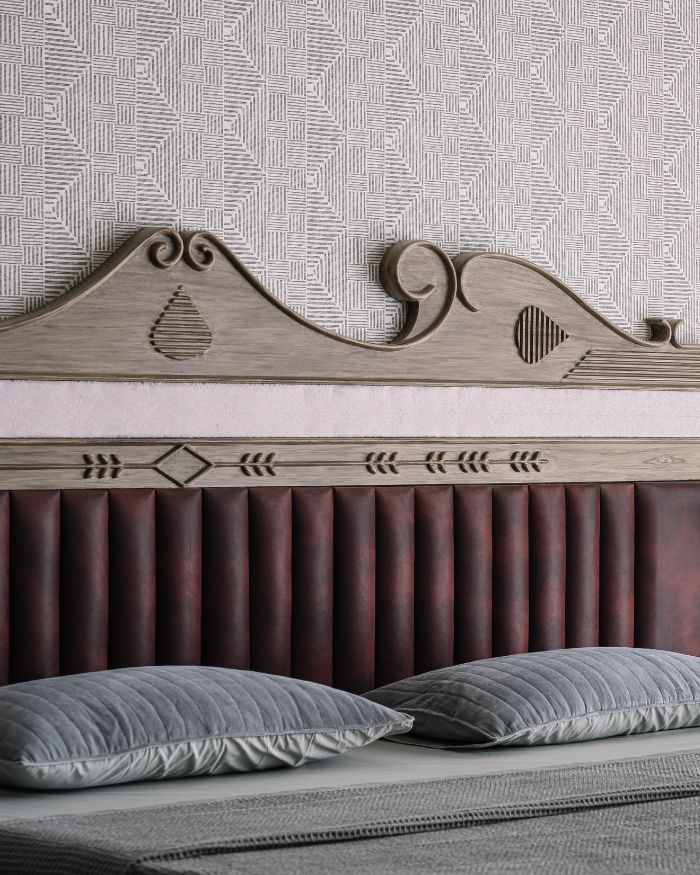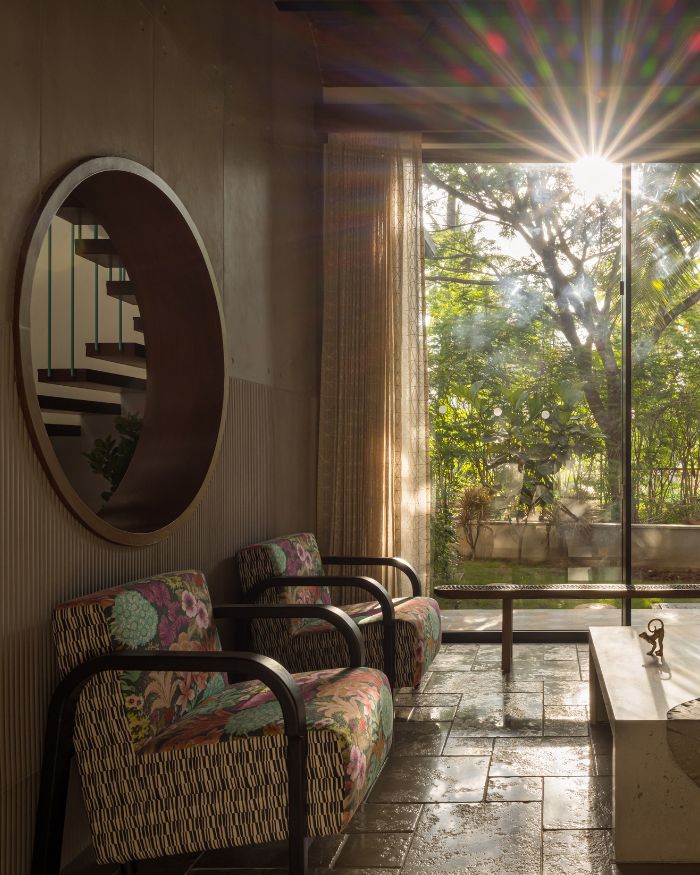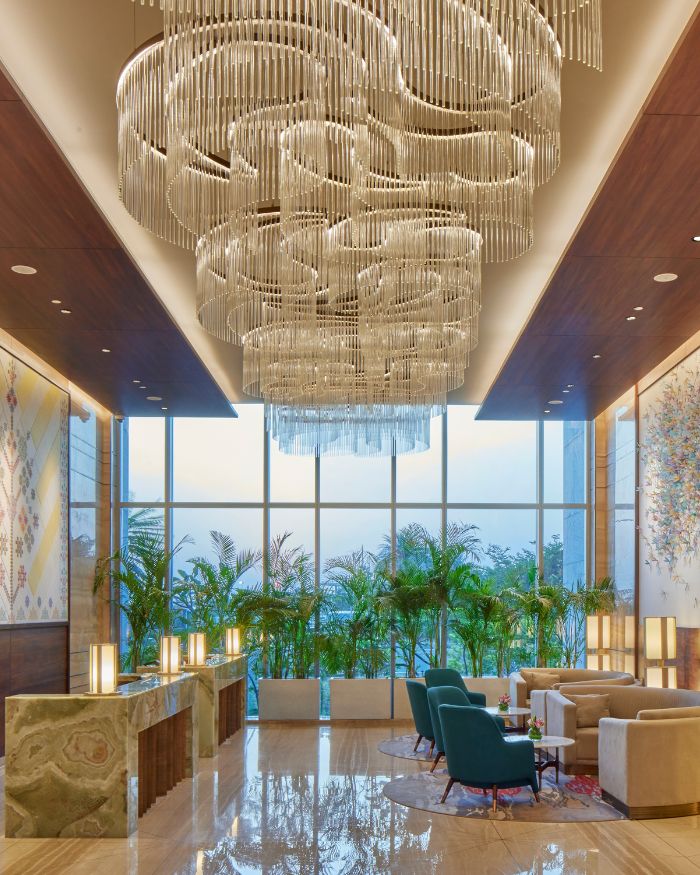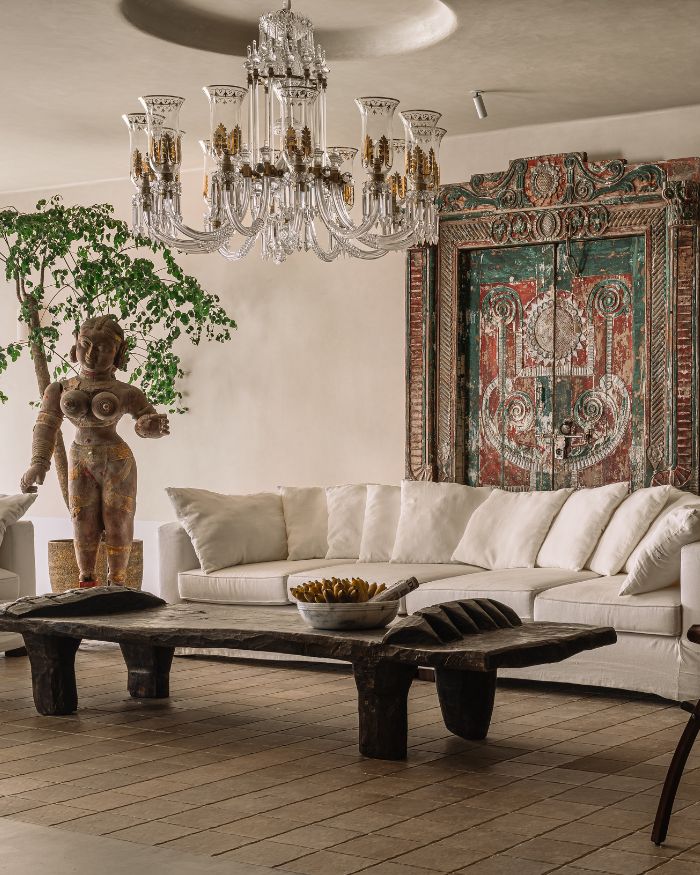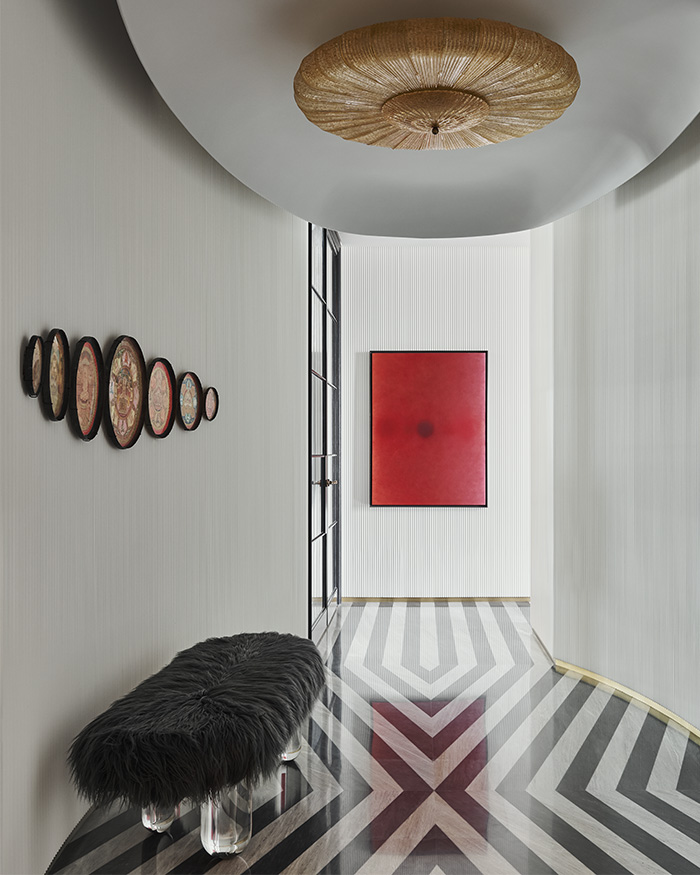On the 37th floor of the housing development Crescent Bay is a 3BHK that gives the impression of stepping back in time. Having previously stayed in an 80 year old building in south Mumbai, the homeowners wanted to recall the quaint glory of Old Bombay—an era of simpler times, earthy textures and soft edges. Mumbai based architecture and interior design firm deCoDe Architecture, founded by Meghna Gilani and Prashant Prabhu, took up the task.
The cofounders shunned the starkness of modern design, in favour of curved corners, rustic materials and plenty of natural light. The main door opens into a passage that leads to a foyer of sorts, with the living room in front and the dining area on the left.
A balcony bursting with shrubbery and overlooking the city adjoins the lounge, while a blue ceramic tiled opening in a wall connects the kitchen to the dining room. On the left is the study that houses an old desk, book cabinet and cane recliner, along with an antique telephone ensconced in a niche. Directly in front of the study is the son’s bedroom with its own balcony.
Being the smallest of the three chambers, it is furnished with a platform bed and a low height partition that functions as a storage unit. The client’s parent’s bedroom on the right was reconfigured to suit their needs, such as bringing the entrance of the en suite bathroom closer to the bed to avoid a long walk to the loo.
The master bedroom at the end of the passage, on the other hand, evolved organically. Once the custom made furniture was laid out, the look and feel of the room developed over time through the selection of finishes, furniture, fabrics and flea market finds. With a design ideology of ‘keeping it simple’, the creatives chose a predominantly white palette—lime plaster walls and ivory terrazzo floors—that acts as a canvas against which the natural hues of different finishes and textures pop out.
Bespoke furnishings made of sustainable and locally sourced materials such as cane, rattan, stone, wood, terrazzo and mosaic tiles lend rustic charm to the space. For flooring that was not cold to the touch but felt natural, they selected a warm terrazzo tile studded with small, coloured ceramic inserts for an old world look. At the behest of the homeowner, stained glass was installed in the partition wall between the study and the living area, which added a spot of colour, while allowing light to brighten the interiors.







